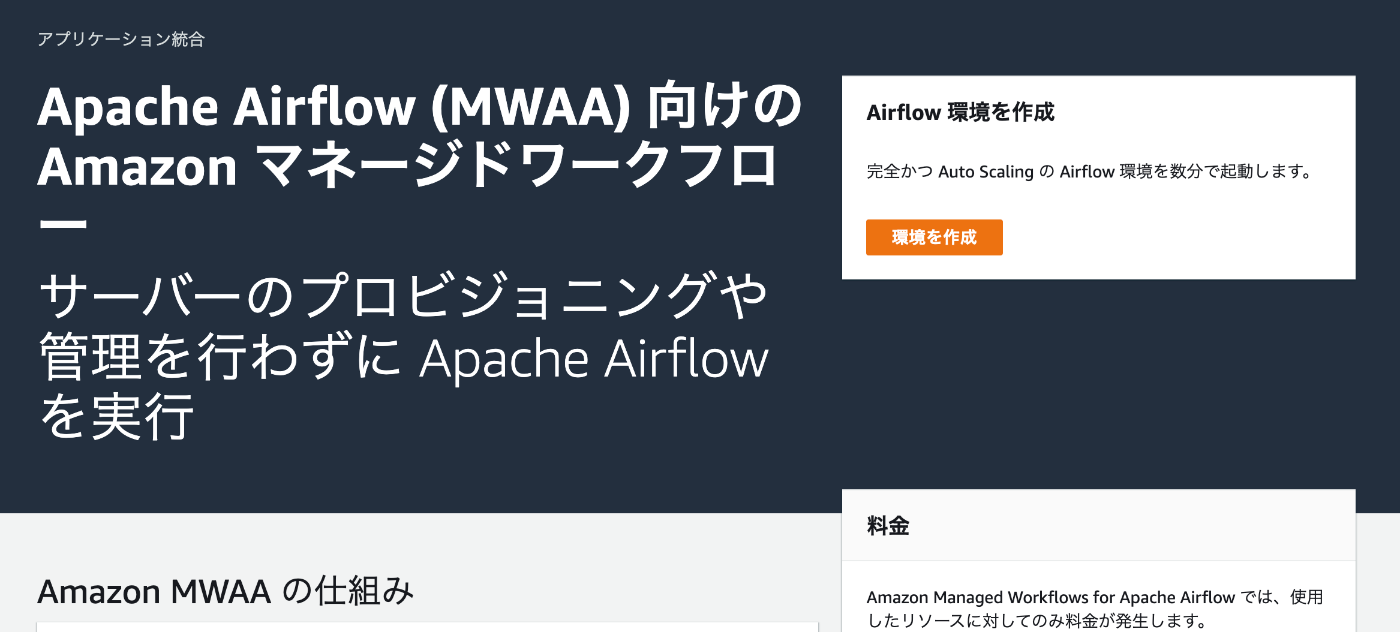

The MWAA ArchitectureĪll the components contained in the outer box appear as a single Amazon MWAA environment in users’ accounts. Operators that invoke tasks on Amazon ECS containers and Kubernetes operators that create and run pods on the Kubernetes cluster are sustained. Worker fleetsĪmazon MWAA offers support for using containers to scale the worker fleet on-demand and reduce scheduler outages using Amazon ECS on AWS Fargate. AWS integrationĪmazon MWAA supports open-source integrations with Amazon Athena, AWS Batch, Amazon CloudWatch, Amazon DynamoDB, AWS DataSync, Amazon EMR, AWS Fargate, Amazon Lambda, Amazon Redshift, Amazon SQS, Amazon SNS, Amazon SageMaker, and Amazon SageMaker, and Amazon S3 as well as hundreds of in-built and community-created operators and sensors. Amazon MWAA automatically sends environment metrics and if enabled Apache Airflow logs to CloudWatch. Workflow monitoringĪmazon CloudWatch can be used to view Apache Airflow metrics and to identify Apache Airflow task delays or workflow errors without the need for additional third-party tools.

The images for these versions will be updated and patched by the Amazon MWAA team. Streamlined upgrades and patchesĪmazon MWAA provides a new version of Apache Airflow periodically. In both cases, access for your Apache Airflow users is controlled by the access control policy that users define in AWS Identity and Access Management (IAM), and AWS SSO. In both cases, access mode uses a VPC endpoint for their Apache Airflow Web server that is accessible in your VPC. With the Private network access mode, people use a VPC endpoint for their Apache Airflow Web Server that is accessible in their VPC. The Public network access mode uses a VPC endpoint for your Apache Airflow Web server that is accessible over the Internet. Marketers can access their Apache Airflow Web server using a private, or public access mode. Data can also be automatically encrypted using AWS Key Management Service, so your environment is secure by default. The Apache Airflow Workers and Scheduler(s) run in Amazon MWAA’s Amazon VPC. The Apache Airflow Workers assume these policies for secure access to AWS services. The end-user can enable role-based authentication and authorization for their Apache Airflow Web server by defining the access control policies in AWS Identity and Access Management (IAM). The auto-scaling component of MWAA can be used to accomplish the demand of the end-users until the demand reaches the maximum number of Workers that the end-user defined. Auto-ScalingĪmazon MWAA can be automatically scaled up by setting up the minimum and maximum number of Workers in the user’s environment.
#AMAZON MANAGED AIRFLOW CODE#
Amazon MWAA sets up Apache Airflow for anyone who wishes to use the same Apache Airflow user interface and open-source code that one can download on the internet. One can quickly set up Apache Airflow by choosing Apache Airflow version when he/she creates an Amazon MWAA environment. Features of Amazon Managed Workflows for Apache Airflow (MWAA) 1. Amazon MWAA auto-scales its workflow execution capacity to meet your requirements and this can be integrated with AWS security services to help marketers with fast and secure access to your data. With Amazon MWAA, one can use Airflow and Python to create workflows without having to manage the underlying infrastructure for scalability, availability, and security. Apache Airflow is an open-source tool used to programmatically author, schedule, and monitor sequences of processes and tasks referred to as “workflows.”

MWAA simplifies the process of setting up and operating end-to-end data pipelines in the cloud at scale. Amazon Managed Workflows for Apache Airflow (MWAA) is a managed orchestration service for Apache Airflow.


 0 kommentar(er)
0 kommentar(er)
